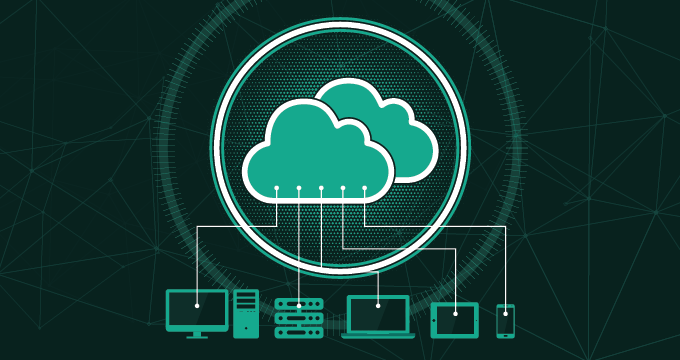Amazon Web Services has been the leading public cloud provider ever since its global release in 2004, and one of the main contributors for the widespread adoption of cloud today.
By adding new services constantly and regularly updating the existing ones, Amazon has driven innovation for well over a decade now. And by the looks of it, Amazon has no intention of slowing down.
Through the AWS Services summary series, we are going to give an overview of some of the most popular AWS services. We’ll look into what they do, but also cover details that you should be familiar with when working with them. So let’s start with one of the most popular services that Amazon has released: Simple Storage Service (S3).
What Is Simple Storage Service (S3)?
S3 is a staple service offered by AWS and is one of the, if not the, most used products on Amazon’s public cloud, due to the ever growing need for data storage in the modern age.
S3 is extremely durable (providing up to 99.999999999% durability), as well as highly scalable and available object storage. It is quite versatile and can be used for a variety of purposes, such as backups, disaster recovery, analytics, archiving, or as a hybrid cloud storage solution.
In addition, S3 provides unmatched security and offers a number of compliance programs such as HIPAA/HITECH, PCI-DSS, EU Data Protection Directive and FISMA.
Amazon S3 pricing is based on the pay-only-for-what-you-use principle. You are charged and billed for the data you store, for all the requests made (PUT, COPY, GET, etc.) and for the data transferred out/in. Note that uploading the data to S3 has no related transfer cost. Additionally, there could be data retrieval charges if cold storage options are used.
Choosing the Correct Amazon S3 Storage Option
S3 comes with multiple storage classes, each designed for a different requirement and each providing cost-saving benefits if utilized properly. As these savings can be significant, make sure you understand your business needs before making a choice.
S3 Standard
S3 Standard is a general purpose storage, used for files that are frequently accessed but still need high availability and durability. S3 Standard provides full 99.999999999 durability, and all of the objects stored in it are replicated within 3 Availability Zones.
S3 Standard is priced at $0.023 per GB stored (on a per month basis). This is the most commonly used class, and in case you don’t choose a class, your data will be stored here by default.
S3 Infrequent Access
For less frequently accessed data, there are multiple options available.
First, there is S3 Infrequent Access (IA). It is offered either as a Standard-Infrequent Access or One-Zone Infrequent Access.
Standard-Infrequent Access offers the same performance as S3 Standard, but reduces the cost of storing data to $0.0125 per GB.
One Zone-Infrequent Access stores data within only 1 Availability Zone, and thus decreases durability and availability, but it also further reduces the storage cost to $0.01 per GB.
Of course, while storage costs for S3 Infrequent Access is lower than the costs for the Standard S3 class, you will have to pay an additional cost for data retrievals, priced at $0.01 per GB.
Use this storage class for the data that you need to access less often, but when needed, you want to have it readily available.
S3 Glacier
If you want to put your data in a true cold storage, S3 Glacier provides a cost-effective solution.
At the price of only $0.004 per GB, S3 Glacier is great for long-term data archiving, but again, you will need to add data retrieval costs on top.
Still, you will have multiple options available and you can get your data within a few minutes thanks to the expedited retrieval (which can be very costly). You can also opt for cheaper but slower choices like standard (takes between 3 and 5 hours) or bulk (takes between 5 and 12 hours) retrievals.
Glacier is great as an archiving solution for regulatory purposes, for disaster recovery or even as a magnetic tape replacement.
And if you are looking to save even more on cold storage, Amazon released S3 Glacier Deep Archive, the cheapest possible class meant for archiving data for long periods of time (7-10 years or more).
This class comes only with the bulk retrieval option, but at the price of only $0.00099 per GB stored, it is by far the most attractive option for public sectors, healthcare or financial services providers that need to meet various compliance requirements.
S3 Intelligent-Tiering
S3 Intelligent-Tiering is a special storage class that automatically moves your data to the most cost-effective storage option, by monitoring access patterns. This way, S3-Intelligent-Tiering allows you to make significant savings on data that doesn’t always fall under one of the above categories.
With S3 Intelligent-Tiering, you are paying for the storage class your object currently belongs to, as well as a small fee for monitoring and automating the changes made for you.
Pitfalls to Avoid
While S3 is simple to use, there are certain aspects you should be cautious about.
For example, Data Transfer Out costs can vary greatly depending on whether you are moving the data within the Availability Zone ($0.01 per GB), across Regions ($0.01 per GB) or outside the AWS completely ($0.09 per GB). These Data Transfer costs apply to other services as well, so pay attention to whether you are moving data from S3, EC2, RDS, etc.
Another thing to have in mind is leaving your buckets open to the public Internet. This used to be a common mistake (and actually now all buckets are closed off to the public by default), and can leave your data vulnerable — an unwanted entity, a malicious person, or a competitor, can gain access to it and compromise your business.
Summary
If you are going to run your business on the AWS cloud, you will most likely rely heavily on S3.
But before you do, it is important to understand how best to utilize its capabilities, as this can greatly affect your long-term spending — improper use is a common reason for paying more than you should.
In this article, we have briefly covered the storage classes being offered and showed why you might want to pick one over the other, so make sure you do the research and run your cloud environment as cost-efficiently as possible.











